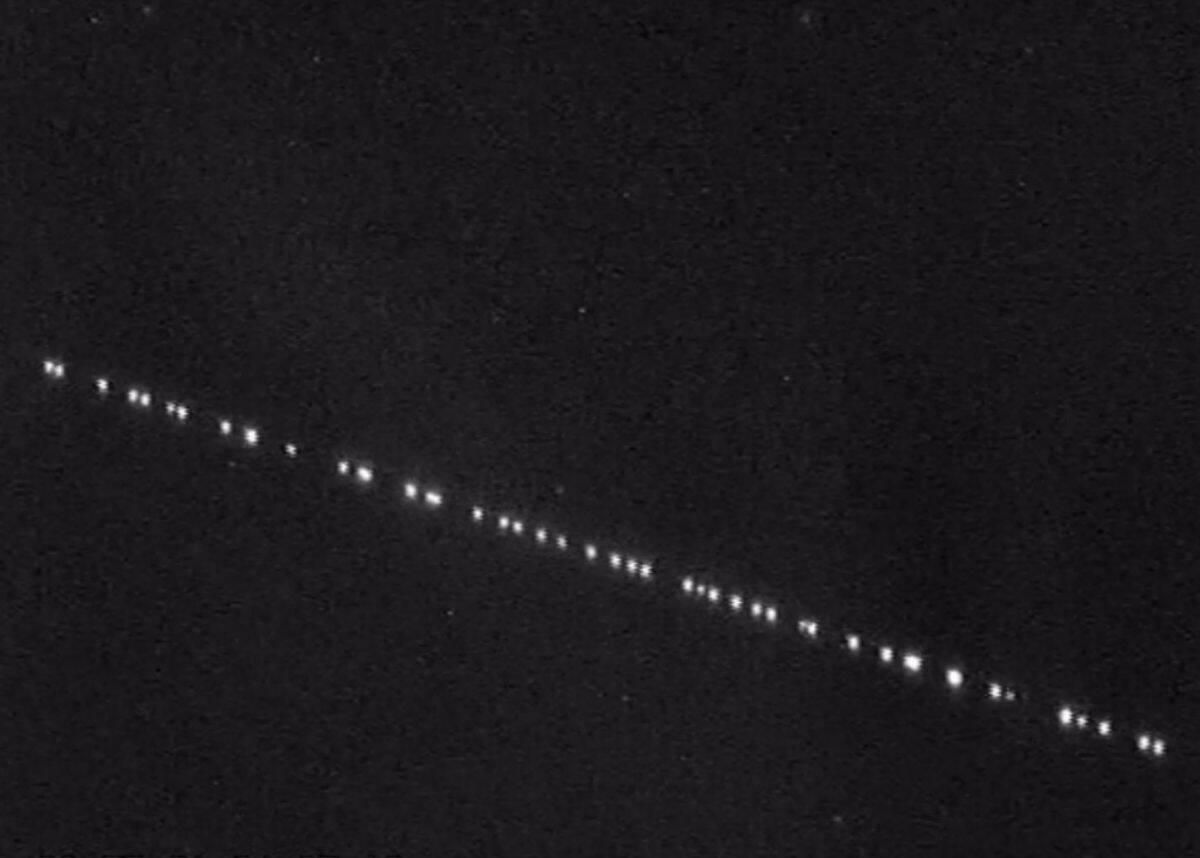See SpaceX hardware in the sky and a North Carolina port

SpaceX successfully launched the Starlink-1 mission Monday morning. The mission includes the 60 communications satellites, each about the size of a dining room table, the launch in the first operational phase of approximately 1,600 satellites intended to provide high-speed internet service to remote parts of the globe. The eventual $10 billion mega constellation of is planned to number 12,000 satellites.
You can see the satellites launched this week as they pass in a growing line of dots in the evening sky. Over the coming days, the satellites will expand their orbits to maximize coverage and will become more difficult to see.
Tuesday’s pass at 5:57 p.m. rising in the northwest before setting in the southwest four minutes later will likely not be visible due to cloud cover. Skies should be much clearer for Wednesday’s pass beginning lower on the western horizon just before 5:58 p.m. before setting in the south four minutes later.
There is another opportunity closer to home to catch a glimpse of SpaceX hardware.
SpaceX’s fairing recovery ships Ms. Tree and Ms. Chief arrived at the Port of Morehead City, NC Monday morning around sunrise. Plans to catch the payload fairing used on the Starlink-1 mission off the North Carolina coast were cut short by high seas.

A pair of payload fairings form the tip of a rocket, protecting the fairing during launch. Once the rocket has reached the thinner parts of the atmosphere, about 3-4 minutes after launch, the faring separate and fall to the ocean below.
Previously, this hardware was simply allowed to sink. SpaceX has been working since 2016 on techniques to recover these fairings, which cost around $3 million each to manufacture.

These fast support vessels, originally built to deliver crew and supplies to offshore oil platforms in the Gulf of Mexico, were modified by SpaceX with large nets. Each ship speeds beneath the fairing halves as they return on parafoils similar to those used by skydivers.
The first five attempts were unsuccessful leading to the installation of a larger net and two successful catches over the summer.









